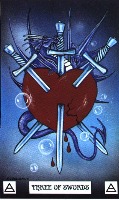
Hey there everyone! So I'm grappling with an issue right now in regards to the games I run on Roll20, and that's the issue of how I should handle dungeons. The way I see it, I have a couple of options and I'm trying to figure out which one works best. So firstly, there's the option of mapping out the whole dungeon in Roll20, setting up dynamic lighting for it all and then having the players move their tokens out of any kind of initiative order. The second option, as I see it, would be to map out the dungeon on a room to room basis, using the map for encounters that are inside of an initiative order. The last option would be to use Roll20 purely for dice rolling/character sheet management and keep the rest as Theatre of the Mind. I started out using the first option, but as time went on it seemed like having the players drag and drop their tokens through the dungeon corridors could detract from the immersion, and the task could become tedious after a while. Not to mention it's also the method that required the most setup, but I'm not really too concerned about that. Now I find myself using the second option, but this method also has problems. Sometimes, the encounter in the room can be taken beyond that room. For example, the party might find themselves falling back into the corridor outside, or even to the previous room, and it's in these situations that building the whole dungeon as one map could help. Does anyone have any advice on how they run things, or if there's an alternative method that I could try out? Thanks in advance :)





